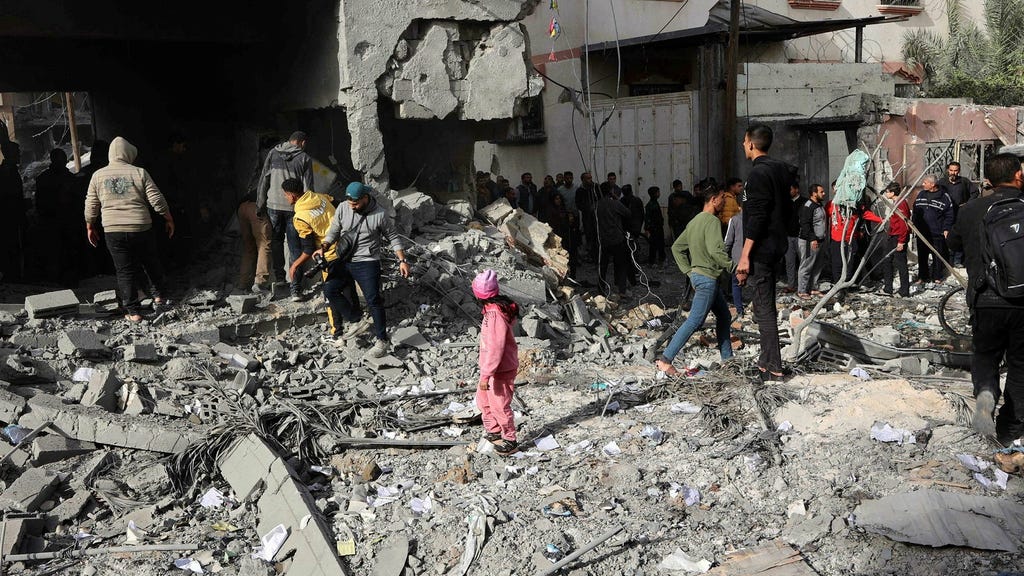The aftermath of Hamas’s October 7th, 2023, terrorist attacks saw Israel launch an intensive bombing campaign on the Gaza Strip, targeting a vast array of locations, including underground tunnel networks, infrastructure, and Hamas leaders’ residences. This list of potential targets, meticulously compiled over years, was rapidly depleted in the early stages of the conflict. Now, over a year into the relentless fighting, the Israeli Defense Forces (IDF) has become increasingly reliant on an AI-powered database, known as “Habsora,” to identify and prioritize new targets for airstrikes, according to reports by the Washington Post. This system, which garnered attention early in the conflict for its reported ability to generate 100 new targets daily, signifies a significant shift in the IDF’s targeting methodology.
The Habsora system’s operational core involves the aggregation and analysis of diverse data streams, encompassing communications intercepts, satellite imagery, and even social media posts. This information fusion process culminates in the generation of proposed coordinates for potential strikes. The system’s reliance on AI raises profound ethical and legal questions, particularly given the already devastating civilian toll in Gaza. The Gaza Ministry of Health, which is controlled by Hamas, reports that 45,000 people, half of whom are women and children, have been killed since the conflict began. Disturbingly, Israeli military sources, cited by the Washington Post, indicate that the number of civilian casualties deemed ”acceptable” has risen in conjunction with the increased automation of target selection.
This purported rise in ”acceptable” civilian casualties is especially alarming given reports from other news outlets. The New York Times, for example, has reported that the IDF sanctions individual airstrikes that carry the risk of killing up to 20 civilians. This aligns with information from the Israeli human rights organization Breaking the Silence, which claims the IDF ”accepts” 15 civilian deaths for every Hamas member killed. The implications of these figures, when considered alongside the extensive use of the AI-driven Habsora system, paint a deeply troubling picture of the evolving nature of warfare and the potential erosion of safeguards for civilian populations.
Inside the IDF, the Habsora system has not been without its detractors. The Washington Post interviewed a dozen individuals with firsthand knowledge of the database’s operation, including soldiers who have served in the ongoing conflict. These sources revealed internal criticism and debate surrounding the system and its implications. The IDF, however, has officially denied the reports of increased civilian casualty acceptance, attributing the enhanced efficiency of their operations to the precision afforded by the new technology. The military emphasizes that all targets generated by the Habsora database require approval by a human officer before any strike is authorized, highlighting the purported human oversight within the automated targeting process.
Beyond Habsora, the IDF’s integration of artificial intelligence extends to other applications, placing them at the forefront of military AI adoption. The Washington Post reveals that Habsora is not the only AI-driven system employed by the IDF. Experts indicate that Israel’s military has integrated AI into its operational framework to a degree unmatched by most other nations. Another system, known as ”Lavender,” reportedly provides a percentage-based assessment of the likelihood of an individual Palestinian being a member of Hamas. This use of AI for profiling individuals raises further ethical concerns regarding potential biases, inaccuracies, and the potential for unjustified targeting.
The increasing reliance on AI in warfare, as exemplified by the IDF’s deployment of systems like Habsora and Lavender, represents a paradigm shift with far-reaching consequences. While the IDF emphasizes the precision and efficiency gains achieved through these technologies, concerns persist regarding the potential for increased civilian casualties, the erosion of human judgment in critical decisions, and the ethical implications of automating targeting processes. The ongoing conflict in Gaza, amplified by the integration of artificial intelligence, demands urgent international attention and scrutiny to ensure the protection of civilian lives and adherence to international humanitarian law. The implications of this technological advancement extend far beyond the immediate conflict, raising fundamental questions about the future of warfare and the role of AI in shaping it.














